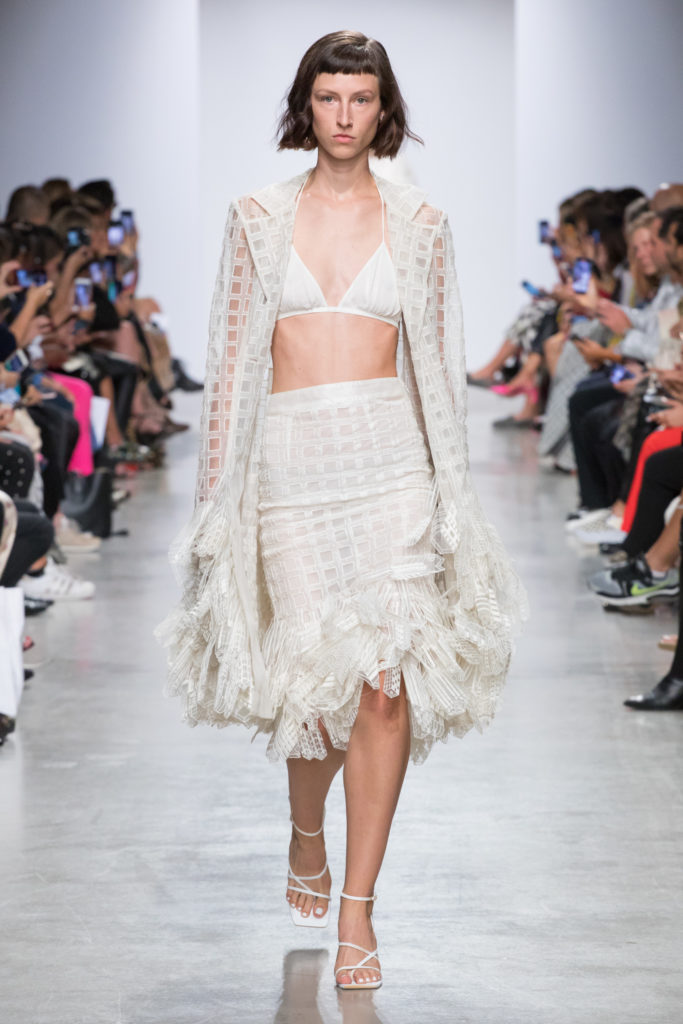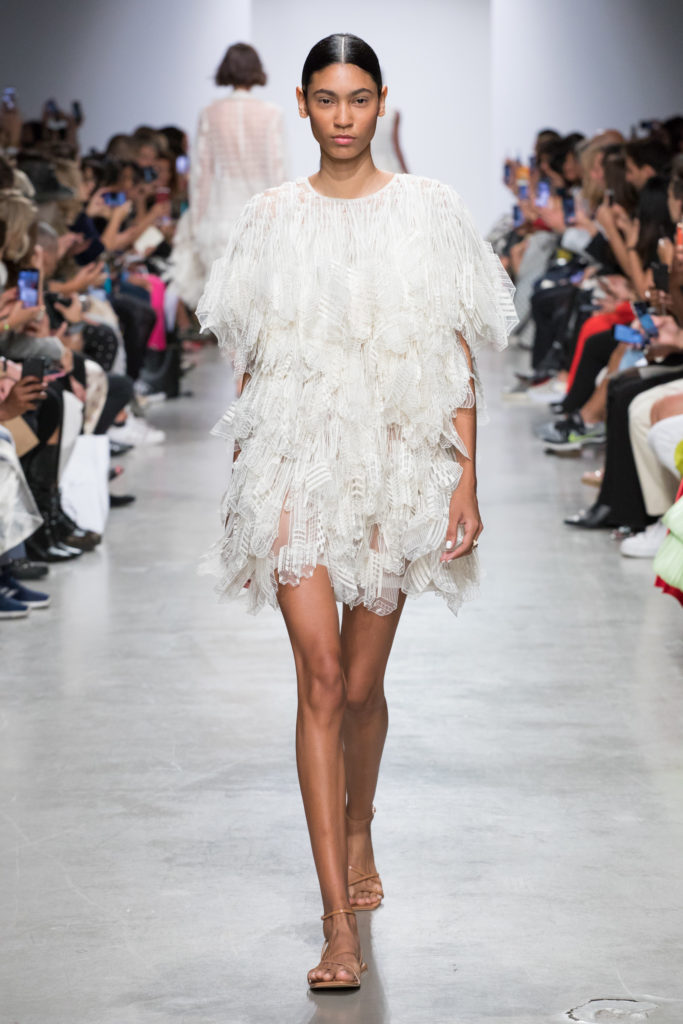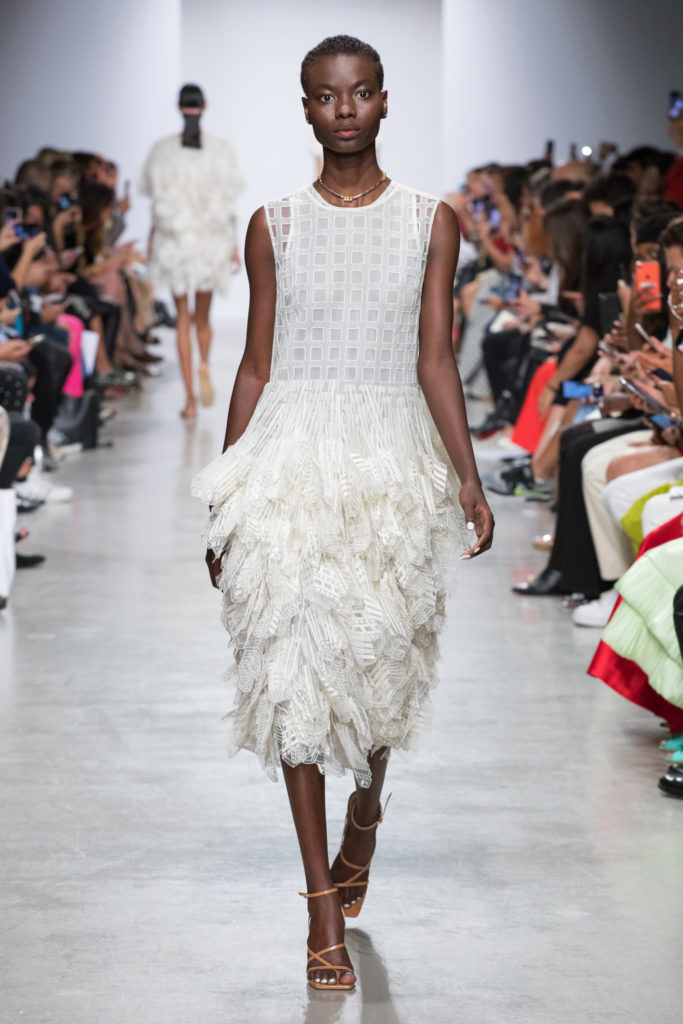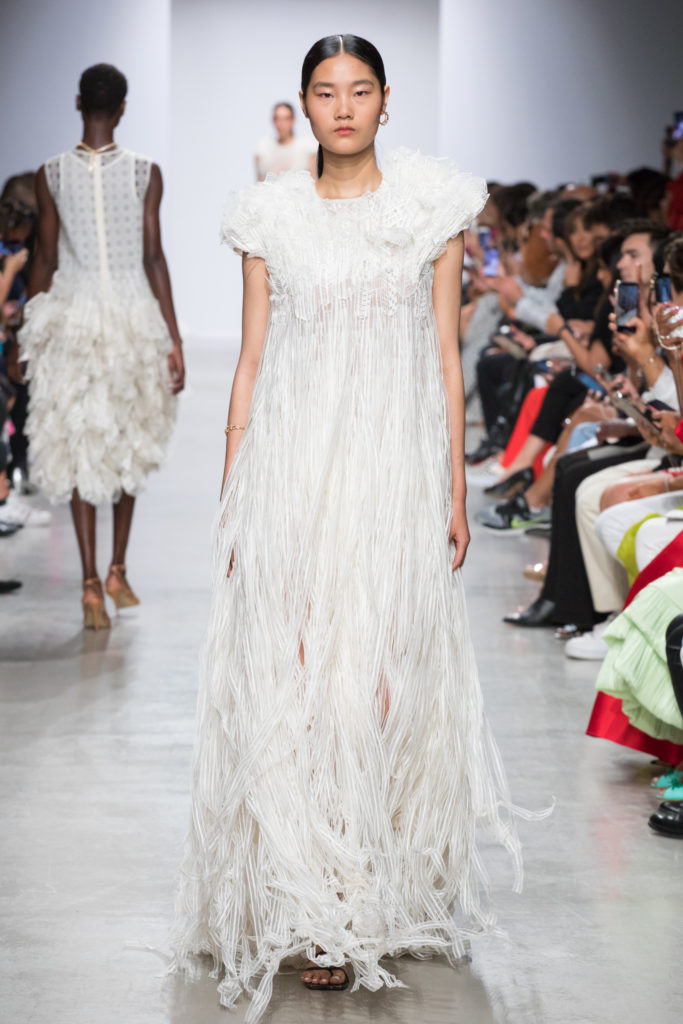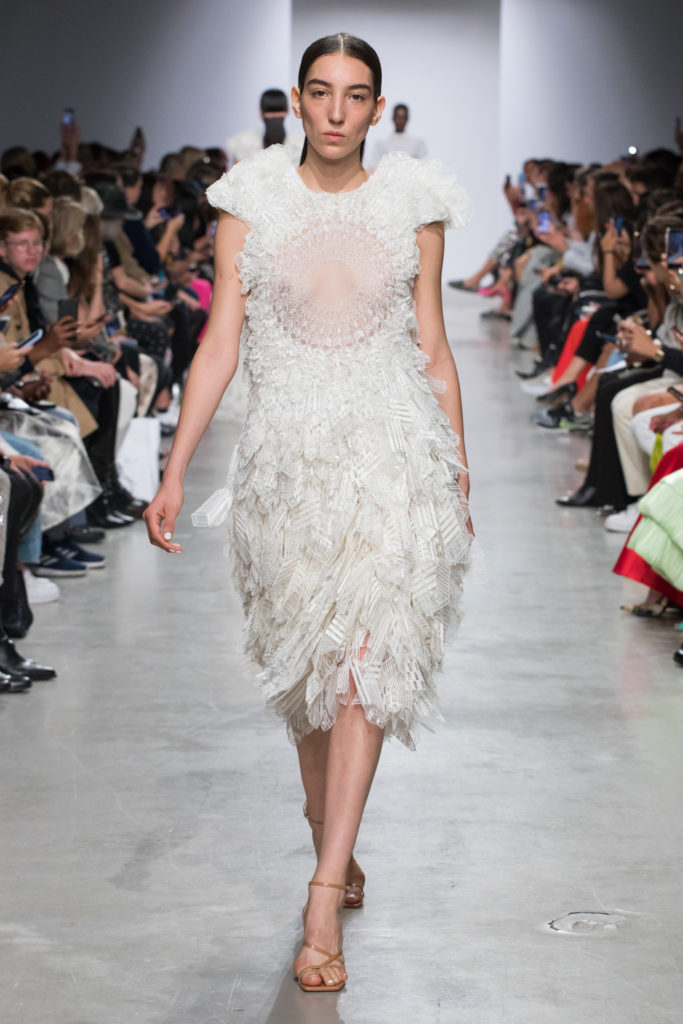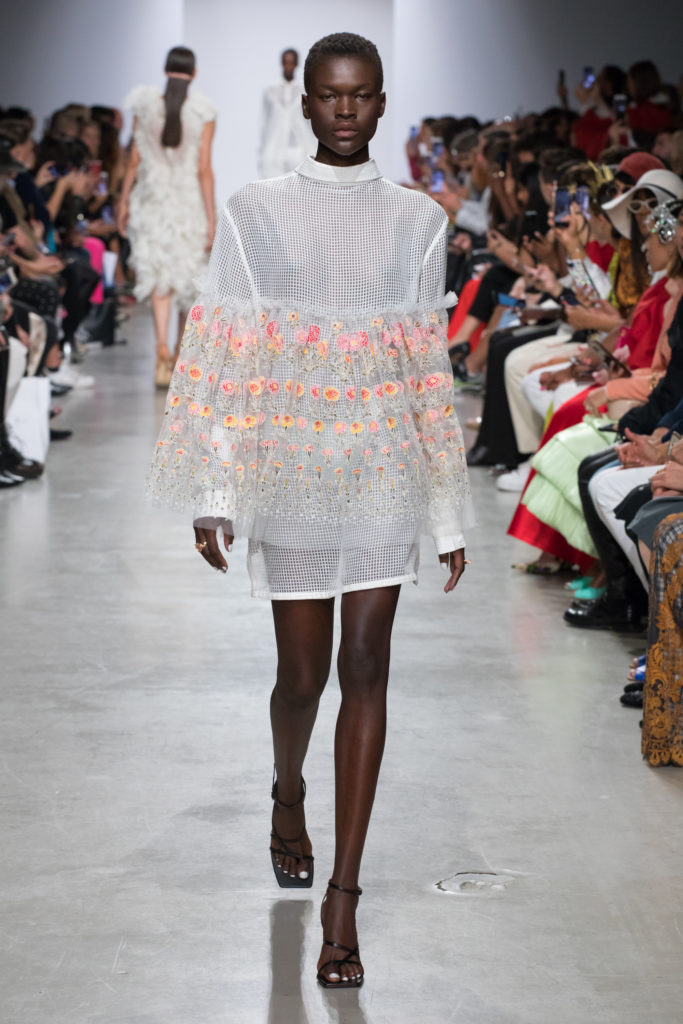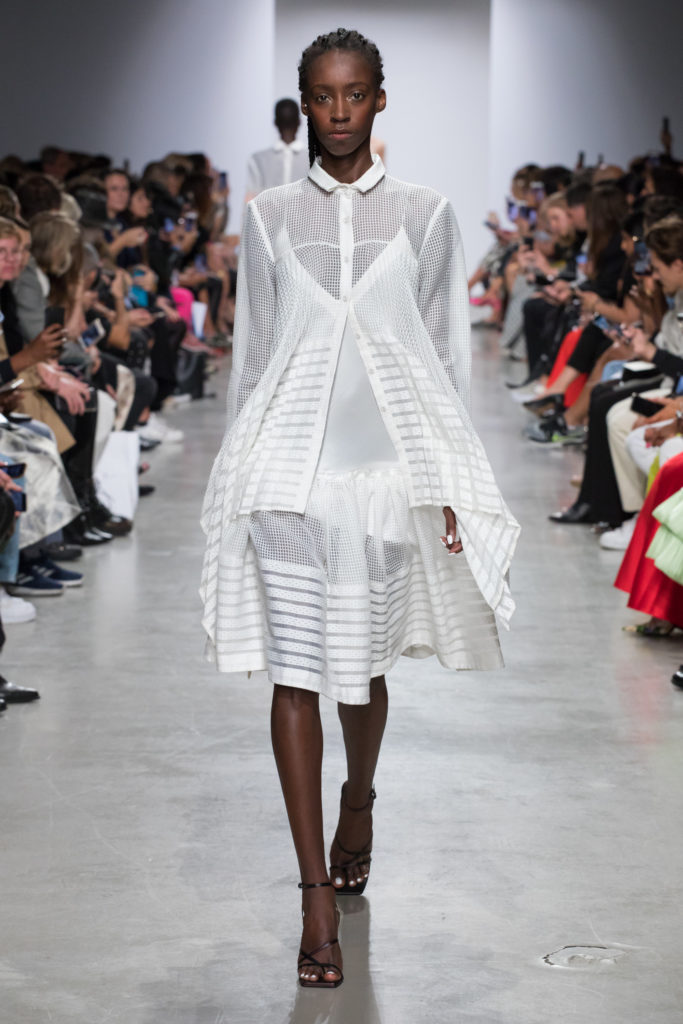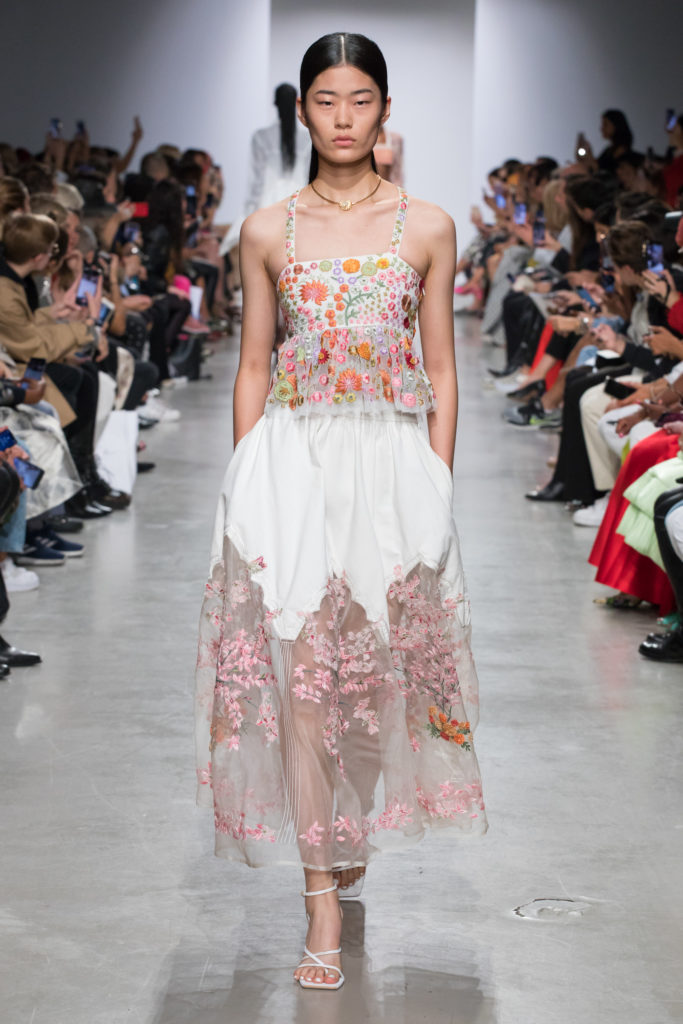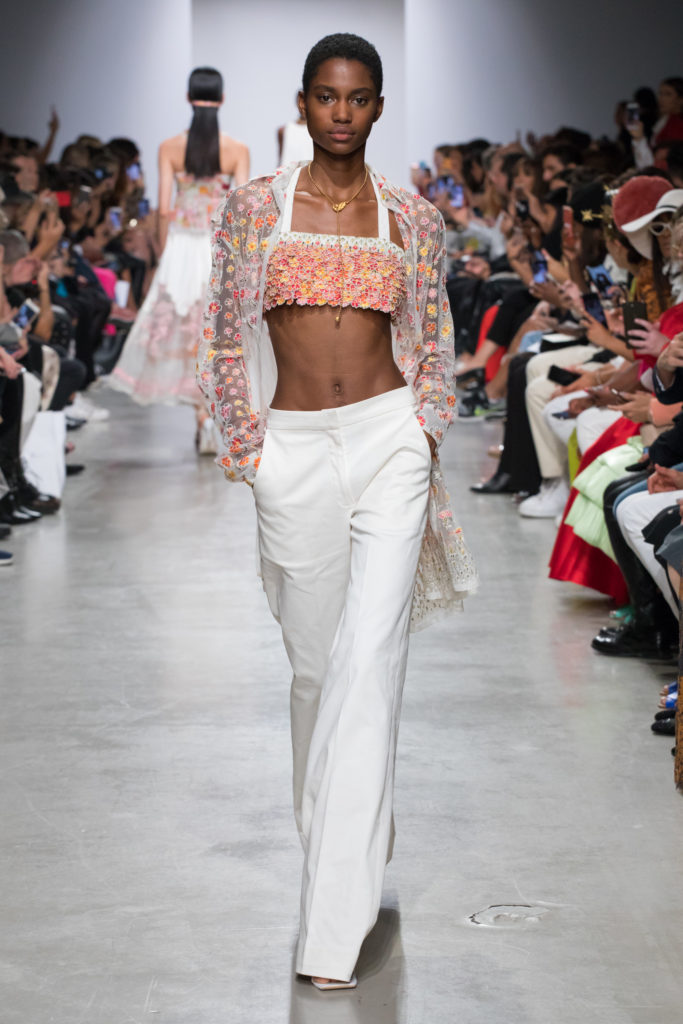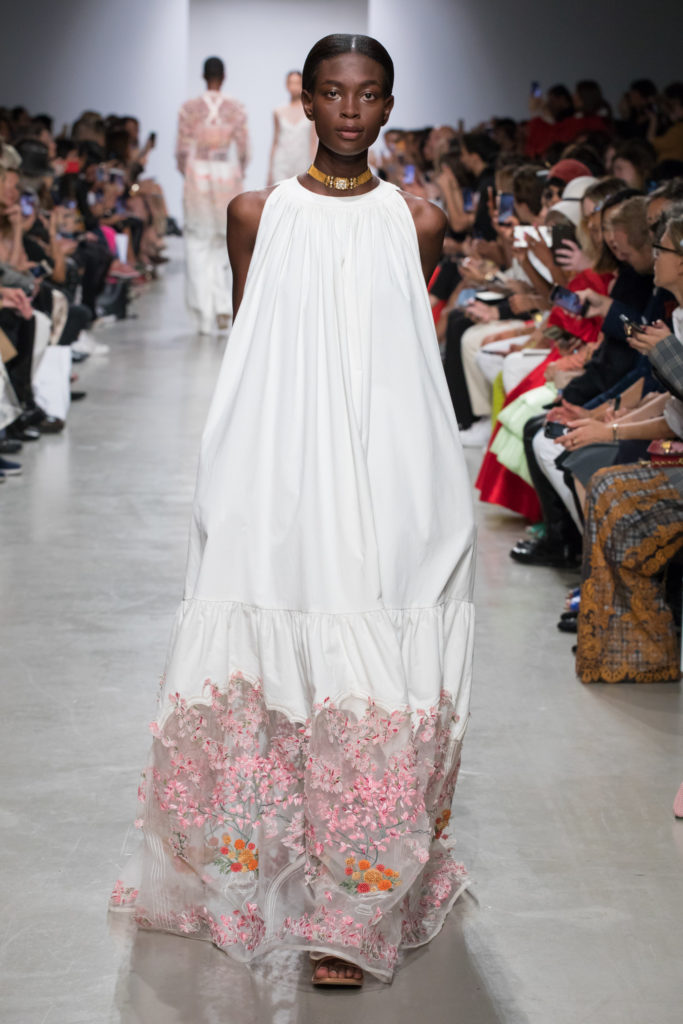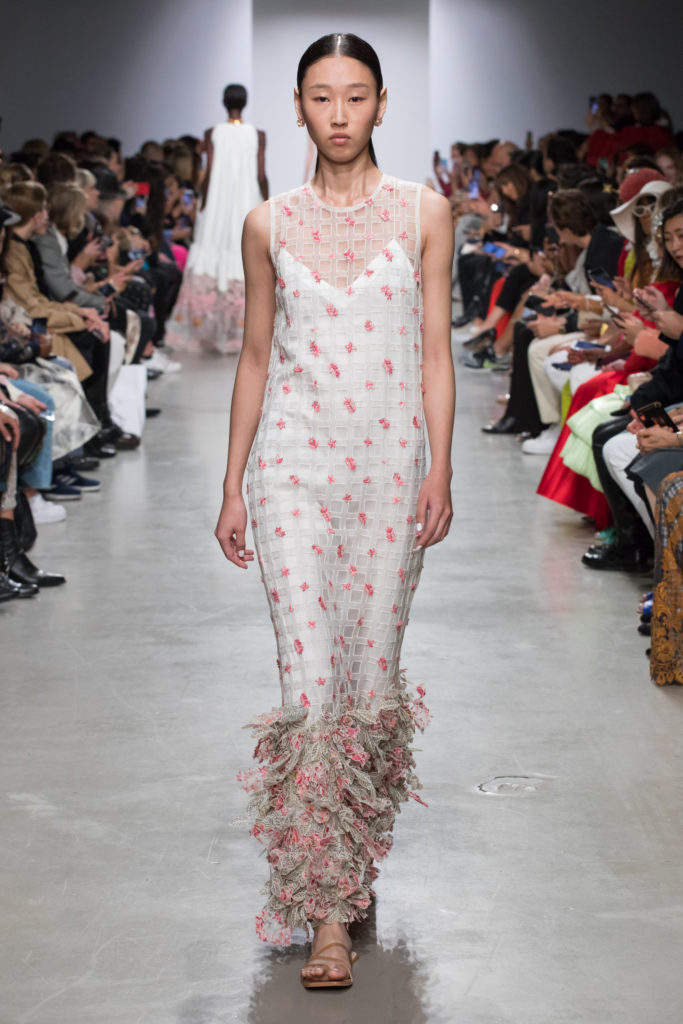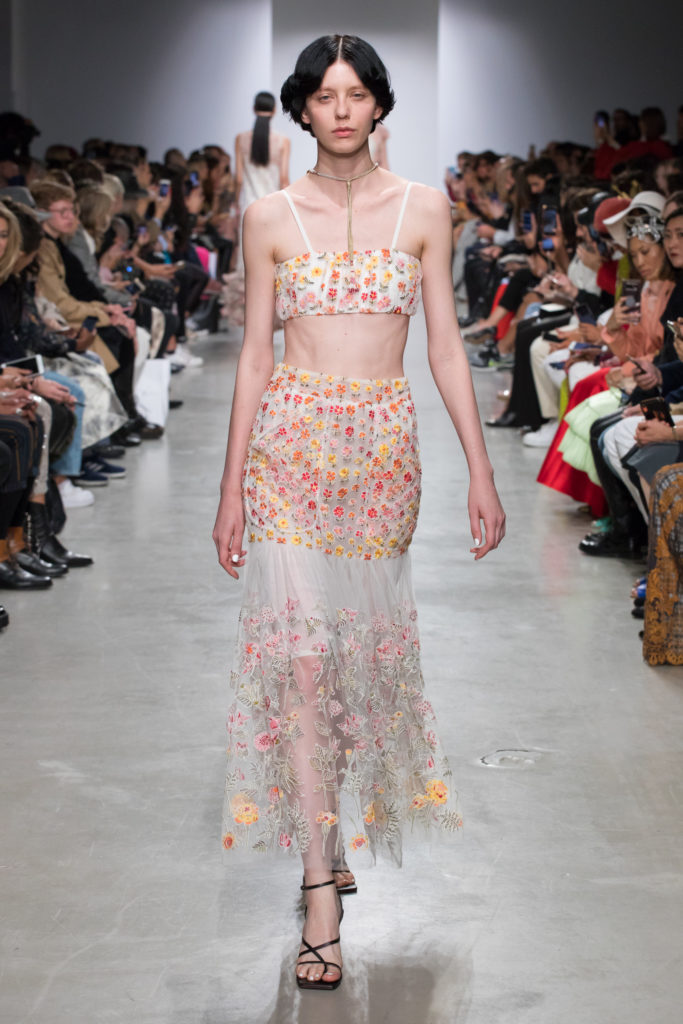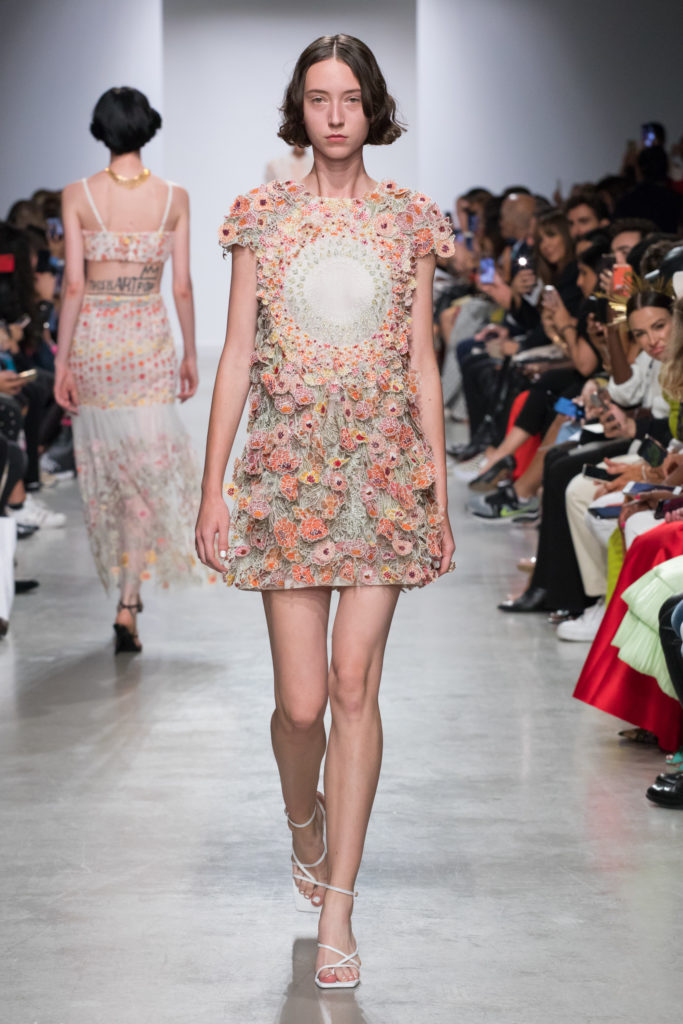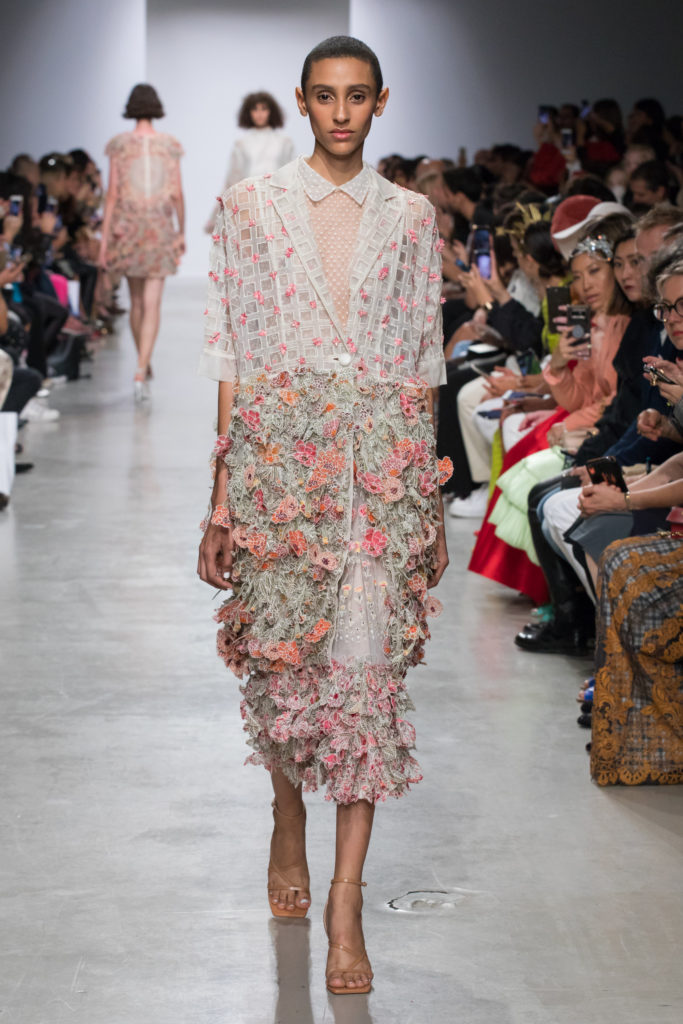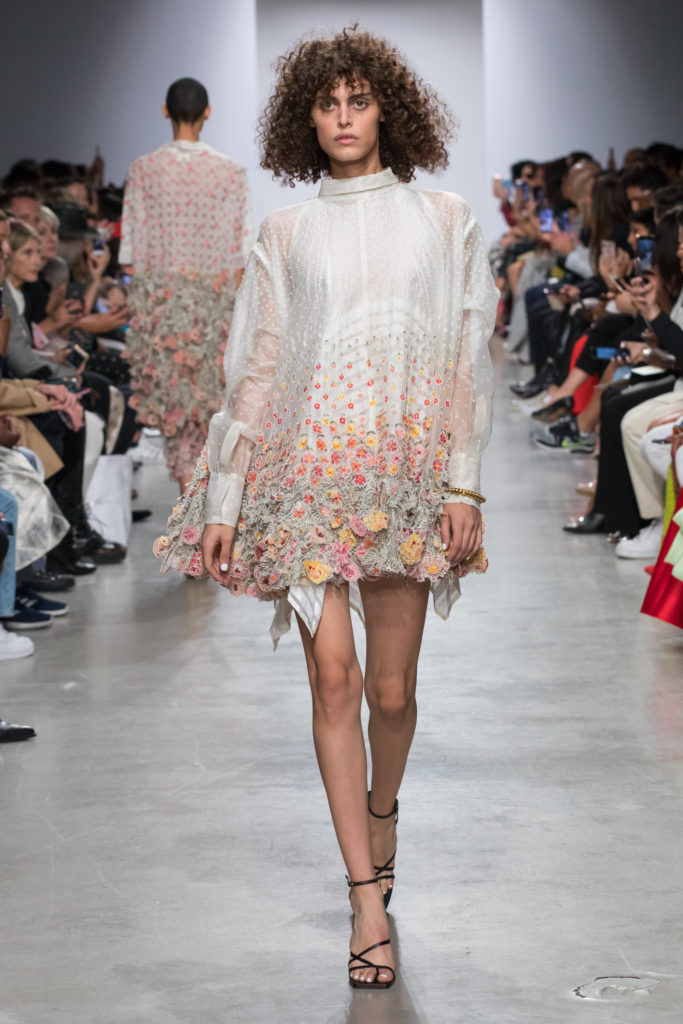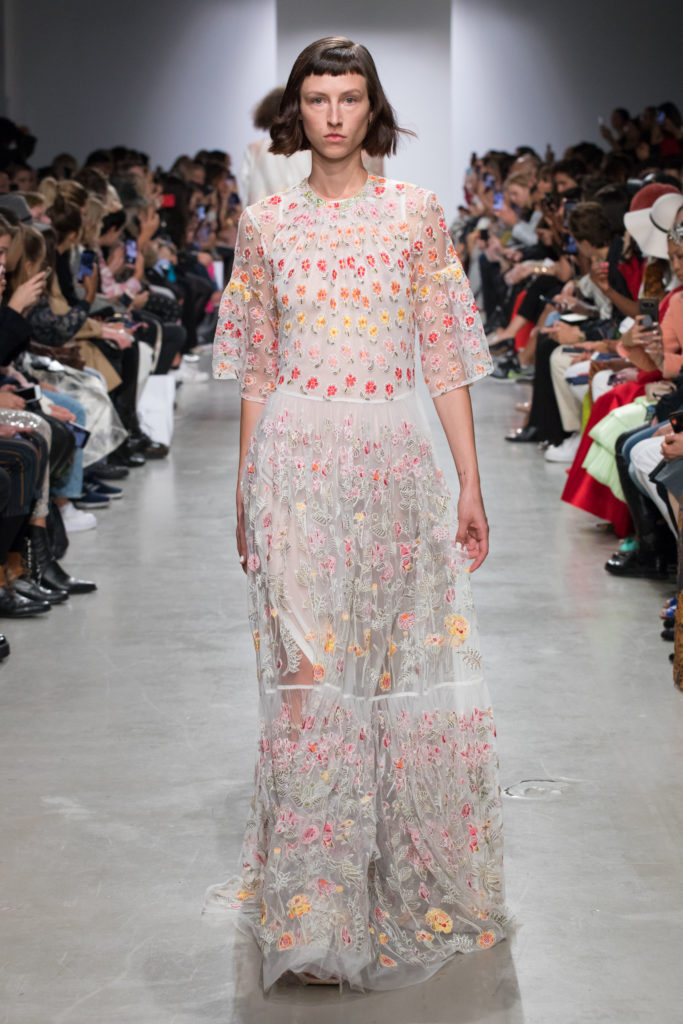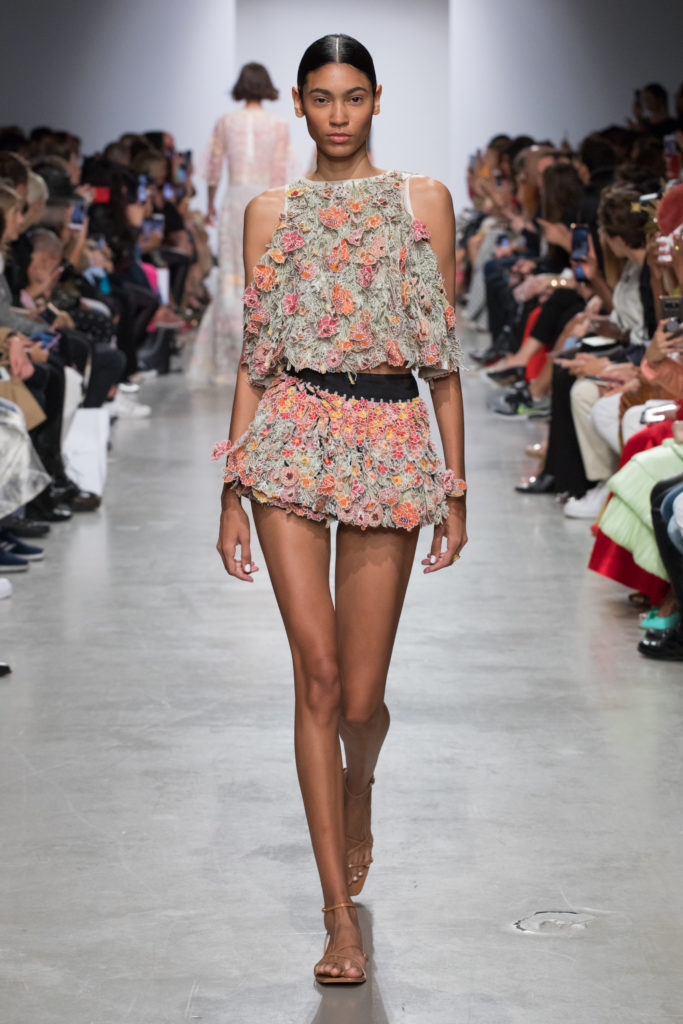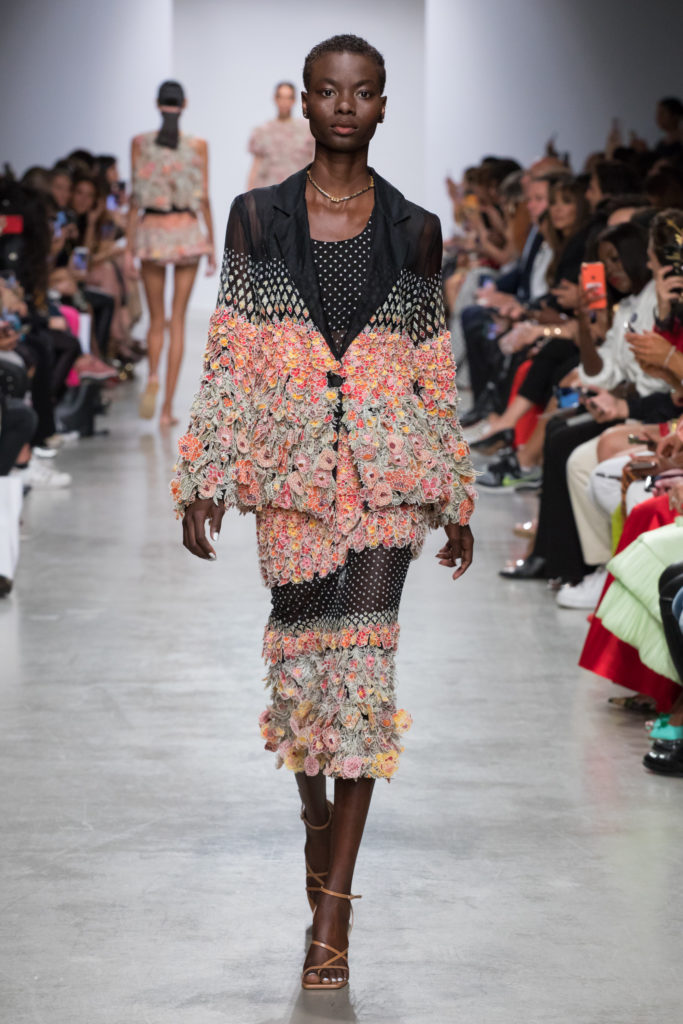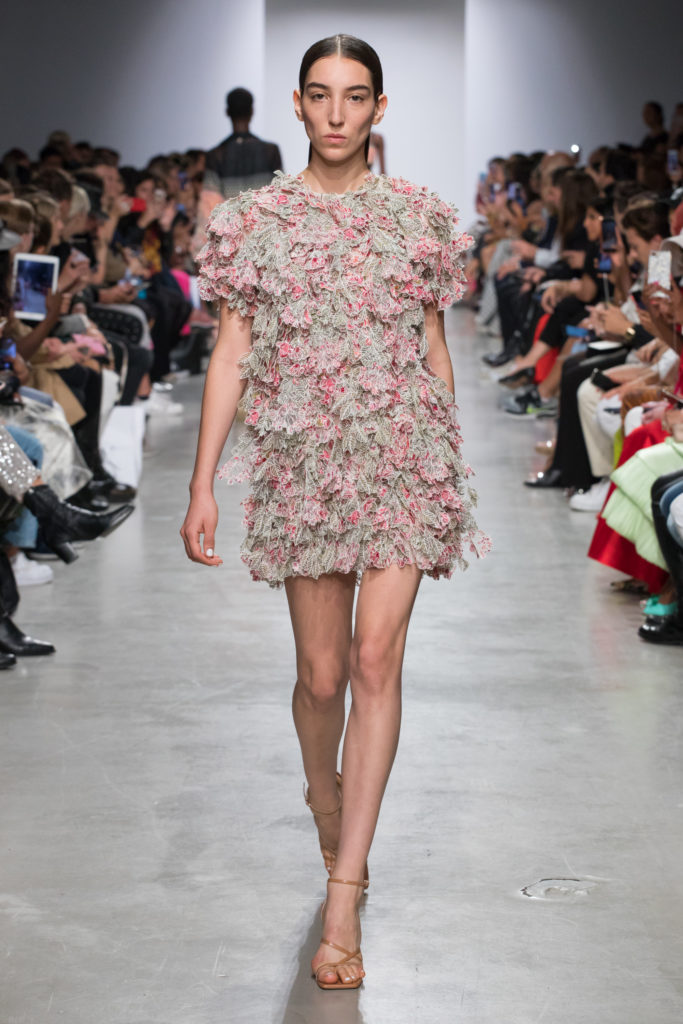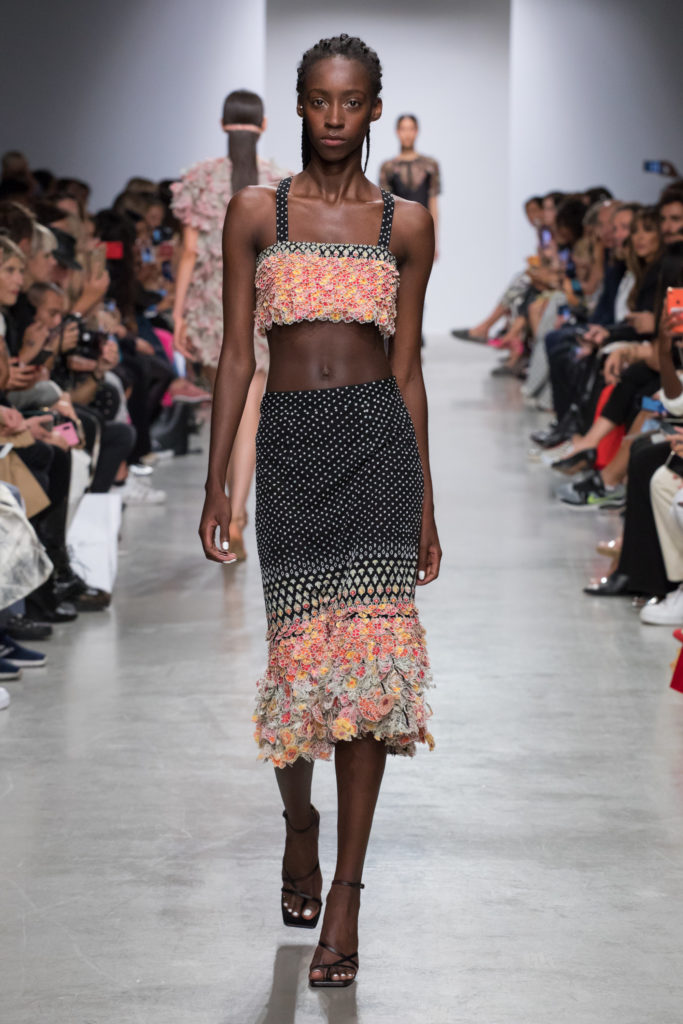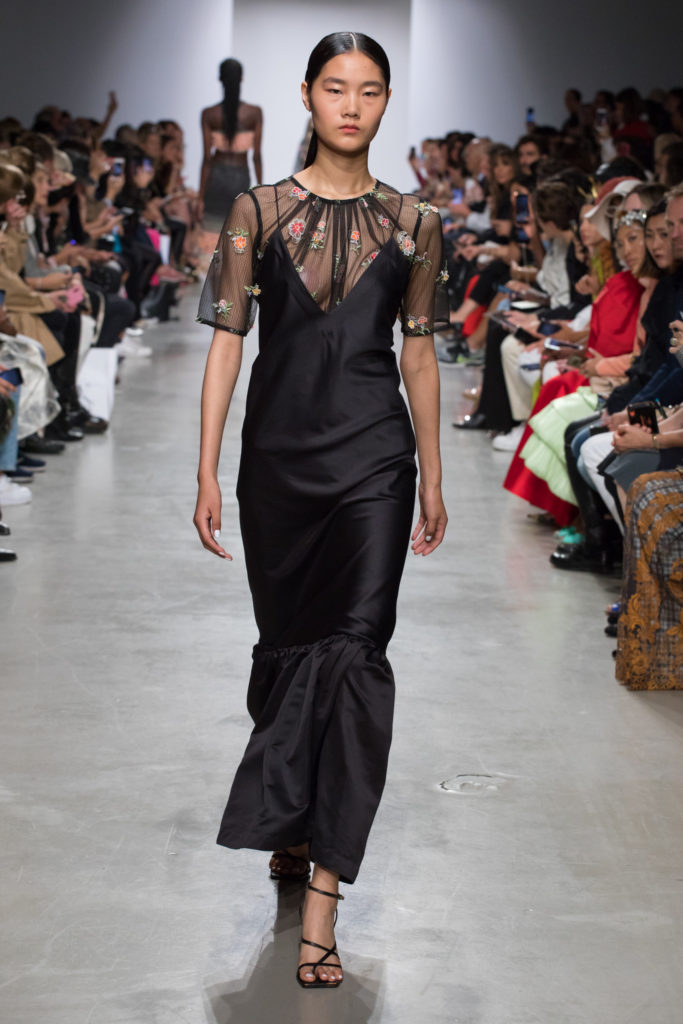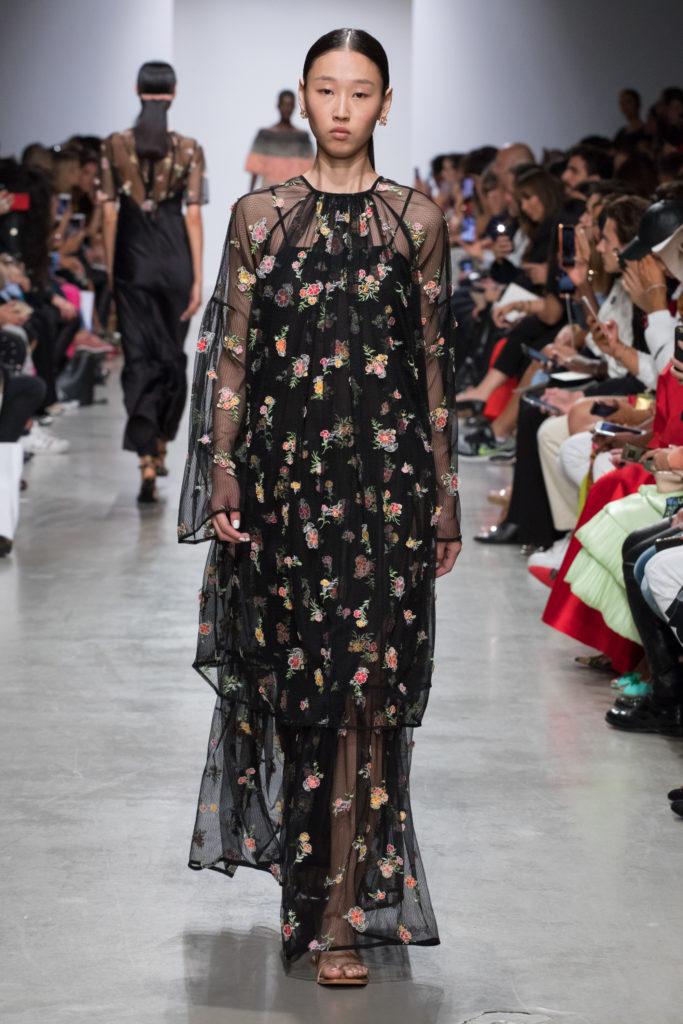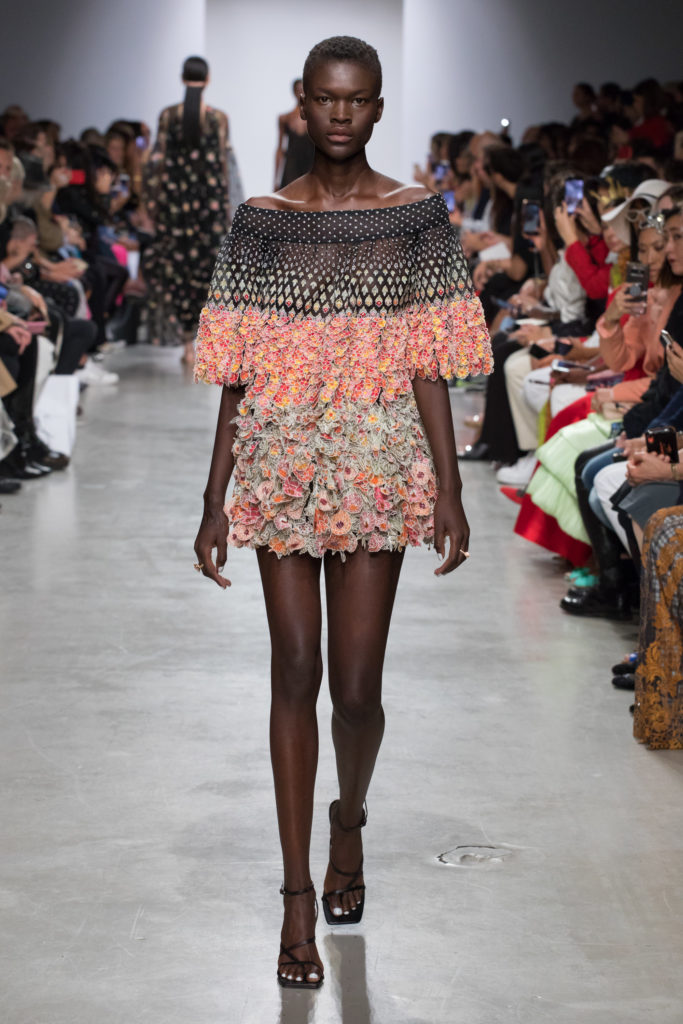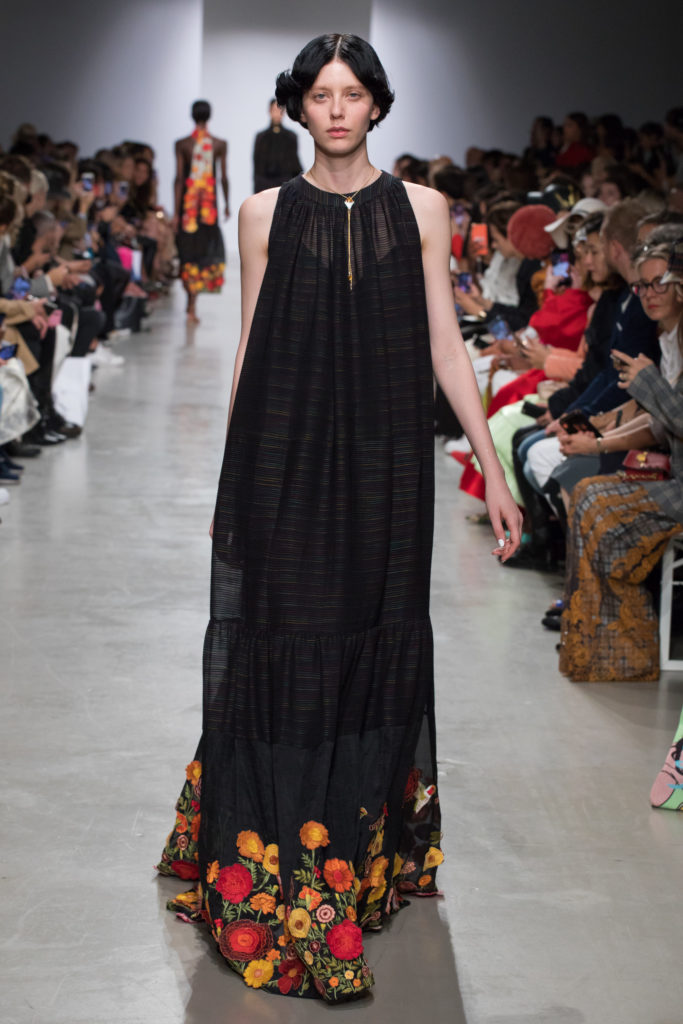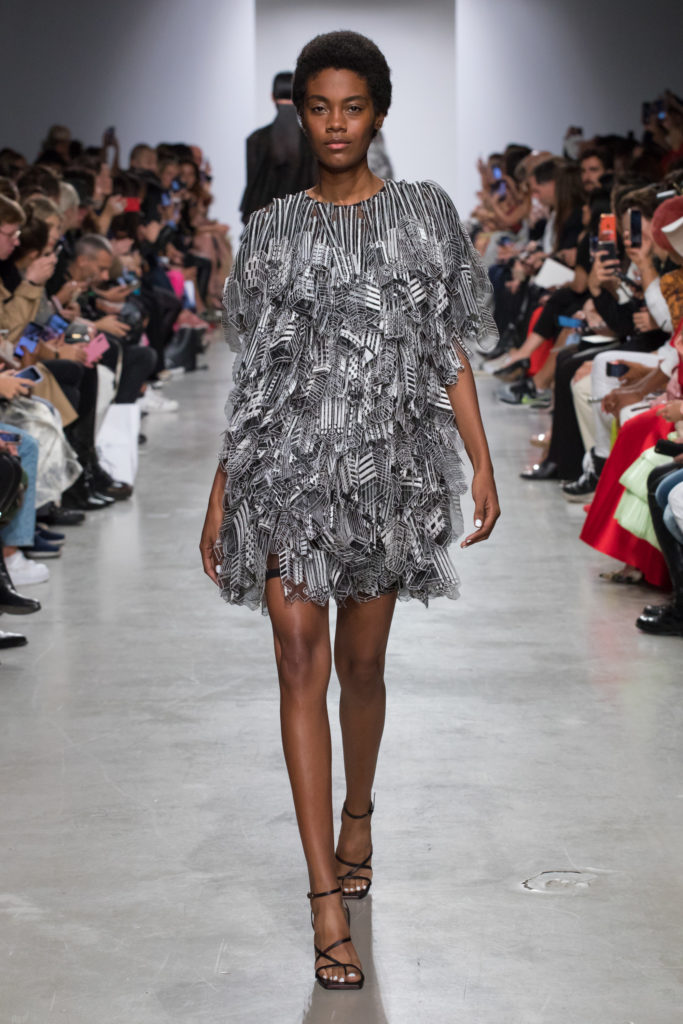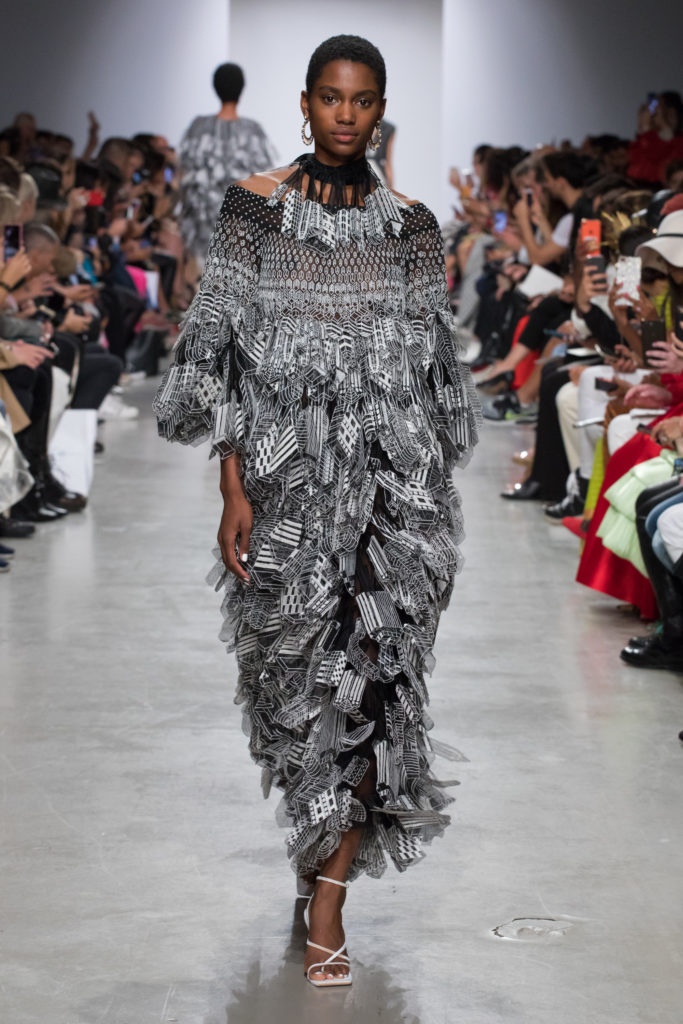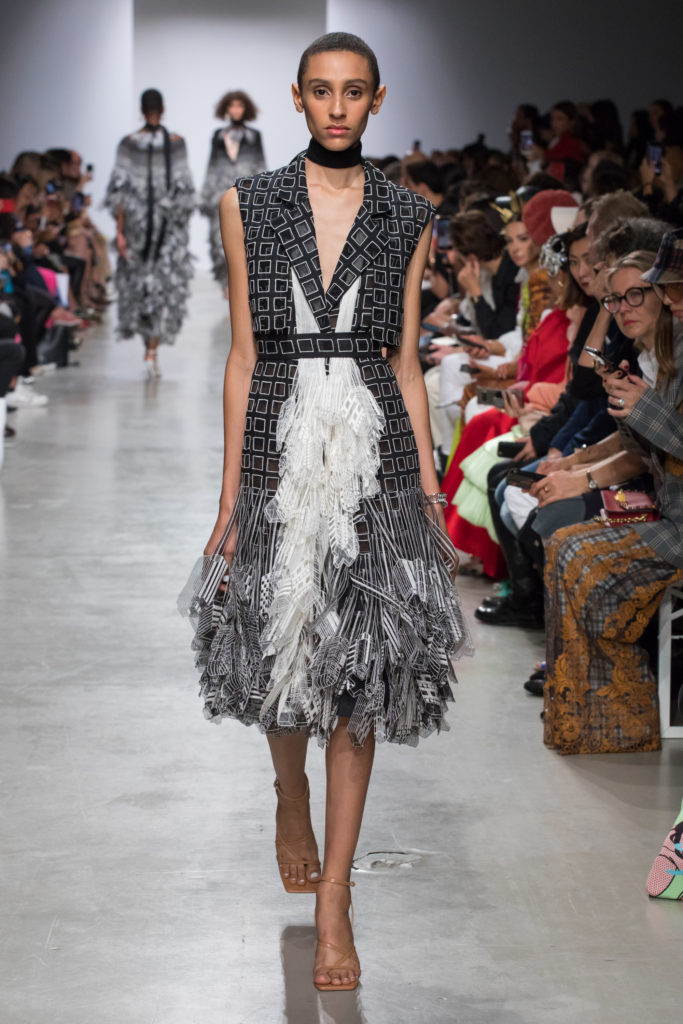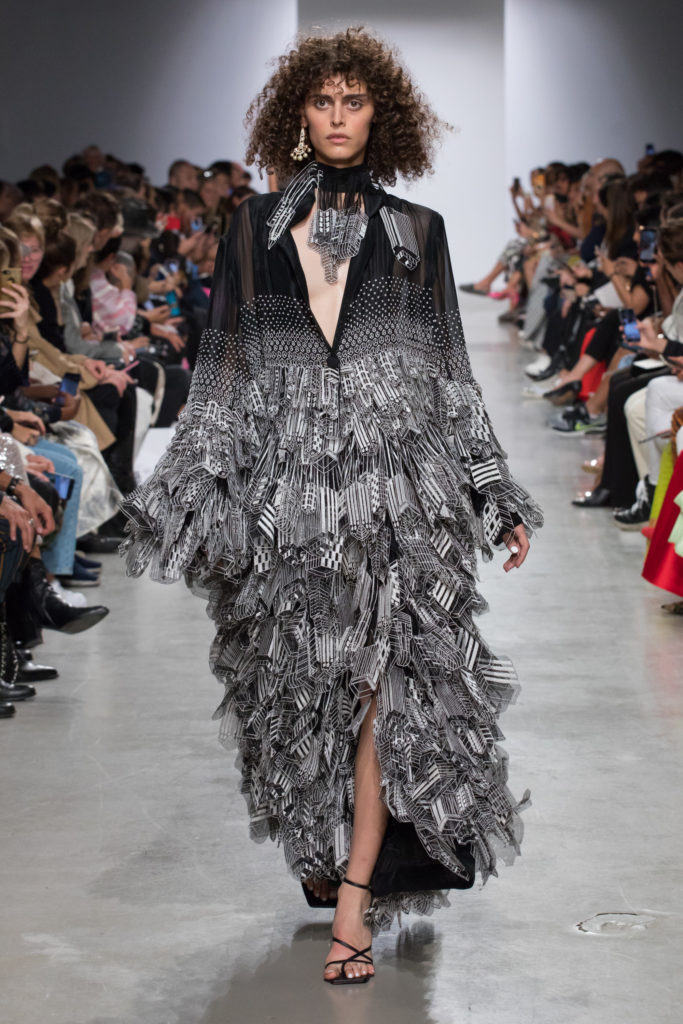RAHUL MISHRA – SUMMER 2020 COLLECTION
» With this collection we have tried to liberate ourselves from how we have looked at embroidery over the past seasons. Can we use embroidery as an extension of textiles enabling a new form? How do we explore volume with flat embroidered motifs? Can we introduce a sense of flow and movement to our embroideries and if so – how?
The idea of living in a constant transit where our habitat transforms from a concrete box to a little nook with a flower patch reflects the reality of modern living. We are surrounded by buildings stemming out from the soil, reaching the skies enlivened by human ambition and drawing resources from the ground – mirroring the growth of a plant. We have attempted to observe both these entities and translate them in a tangible way through the clothes.
Our artisanal approach to embroidery is reimagined for this collection where certain pieces have taken more than 3400 human hours of hand cutting and hand embroidering. They are light as air considering the thousands of buildings perched on delicate organza or countless hand embroidered flowers confectioned in tulle. The aspect of motion is brought about by the application of embroidery. Each marigold twig, bougainvillea branch or building is individually hand-tacked onto an embroidered stem that is then secured on the fabric by hand stitches. A labyrinthine grid lays the foundation for these intricately embroidered motifs that impersonate a lush foliage or a city growing relentlessly on a piece of fabric.
This was a leap of fantasy, an ode to the fabled tradition of couture. For this season we have worked with craft clusters across India and the concentrated usage of embroidery allowed for employment and generating livelihood for craftsmen. The production of this collection will take place in Baundpur in East India where our long held collaboration and continued efforts have led to the reverse migration of more than 300 embroiderers from the slums of Mumbai to their homes in villages with their families.
It feels more important now than ever for us to reiterate our focus on slow fashion, on adding lasting value to clothes that tell a story while building a socially sustainable model that empowers the strong craft community of rural India. »
Rahul Mishra

